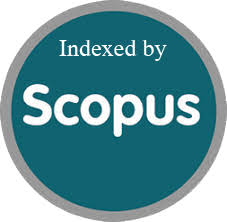DCNN For Cataract Disease Detection Based on Model Parallelism
Abstract
The retina is susceptible to numerous diseases, and cataracts are most prevalent, especially in developing nations. Cataracts are recognized as one of the most impactful diseases affecting the retina, given their propensity to develop asymptomatically and potentially lead to blindness or impaired vision among the elderly. Timely detection of cataracts and appropriate intervention is pivotal in mitigating disease progression and reducing instances of blindness attributable to this condition. This study provides a deep learning system based on parallel architectures, that utilized a proposed deep convolutional neural network (DCNN), to detect and diagnose cataract disease accurately. ODIR dataset was used for training and validating the proposed model, which achieved 97.7% accuracy for cataract detection, with an inference time of no more than 0.06 sec.
References
- A. Marouf, M. M. Mottalib, R. Alhajj, J. Rokne, and O. Jafarullah, "An efficient approach to predict eye diseases from symptoms using machine learning and ranker-based feature selection methods," Bioengineering, vol. 10, no. 1, p. 25, 2022. https://doi.org/10.3390/bioengineering10010025
- A. Zanlorensi, E. Luz, R. Laroca, A. S. Britto, L. S. Oliveira, and D. Menotti, "The impact of preprocessing on deep representations for iris recognition on unconstrained environments," in 2018 31st SIBGRAPI conference on graphics, patterns and images (SIBGRAPI), 2018: IEEE, pp. 289-296.
- Albahli and G. N. Ahmad Hassan Yar, "Automated detection of diabetic retinopathy using custom convolutional neural network," Journal of X-Ray Science and Technology, vol. 30, no. 2, pp. 275-291, 2022.
- Alwakid, W. Gouda, and M. Humayun, "Deep Learning-based prediction of Diabetic Retinopathy using CLAHE and ESRGAN for Enhancement," in Healthcare, 2023, vol. 11, no. 6: MDPI, p. 863 DOI: 10.3390/healthcare11060863
- Bhimavarapu and G. Battineni, "Deep Learning for the Detection and Classification of Diabetic Retinopathy with an Improved Activation Function," in Healthcare, 2022, vol. 11, no. 1: MDPI, p. 97. https://doi.org/10.3390%2Fhealthcare11010097
- David Freire, J. Rodrigo Montenegro, H. Andres Mejia, F. Paul Guzman, C. Enrique Bustamante, R. Xavier Velastegui, et al. 2021 4th International Conference on Data Storage and Data Engineering 2021 Pages: 45-51.
- Demir and B. Tac, "An effective and robust approach based on R-CNN+ LSTM model and ncar feature selection for ophthalmological disease detection from fundus images," Journal of Personalized Medicine, vol. 11, no. 12, p. 1276, 2021.
- Elloumi, "Mobile aided system of deep-learning based cataract grading from fundus images," in Artificial Intelligence in Medicine: 19th International Conference on Artificial Intelligence in Medicine, AIME 2021, Virtual Event, June 1518, 2021, Proceedings, 2021: Springer, pp. 355-360.
- Fan et al., "Detecting glaucoma in the ocular hypertension study using deep learning," JAMA ophthalmology, vol. 140, no. 4, pp. 383-391, 2022.
- Guo, S. Zeng, J. Yu, Y. Wang, and H. Yang, "[DL] A survey of FPGA-based neural network inference accelerators," ACM Transactions on Reconfigurable Technology and Systems (TRETS), vol. 12, no. 1, pp. 1-26, 2019.
- H. Tan et al., "Age-related macular degeneration detection using deep convolutional neural network," Future Generation Computer Systems, vol. 87, pp. 127-135, 2018. https://doi.org/10.1016/j.future.2018.05.001
- K. Jha and A. Verma, "Fundus Image Classification using Quantized Deep Learning," 2018.
- Kashyap, R. Nair, S. M. P. Gangadharan, M. Botto-Tobar, S. Farooq, and A. Rizwan, "Glaucoma detection and classification using improved U-Net Deep Learning Model," in Healthcare, 2022, vol. 10, no. 12: MDPI, p. 2497. https://doi.org/10.3390/healthcare10122497
- Kim, H. Nam, W. Jung, and J. Lee, "Performance analysis of CNN frameworks for GPUs," in 2017 IEEE International Symposium on Performance Analysis of Systems and Software (ISPASS), 2017: IEEE, pp. 55-64.
- Lin, Q. Cai, and M. Lin, "Multi-label classification of fundus images with graph convolutional network and self-supervised learning," IEEE Signal Processing Letters, vol. 28, pp. 454-458, 2021.
- Mangla, S. Dhall, N. Gupta, S. Rastogi, and S. Yadav, "Ocular Disease Recognition Using Convolutional Neural Networks," in International Advanced Computing Conference, 2022: Springer, pp. 422-433.
- N. Alam et al., "Deep learning-based sentiment analysis of COVID-19 vaccination responses from Twitter data," Computational and Mathematical Methods in Medicine, vol. 2021, 202. https://doi.org/10.1155/2021/4321131
- Ran, K. Niu, Z. He, H. Zhang, and H. Song, "Cataract detection and grading based on combination of deep convolutional neural network and random forests," in 2018 international conference on network infrastructure and digital content (IC-NIDC), 2018: IEEE, pp. 155-159. http://dx.doi.org/10.1109/ICNIDC.2018.8525852
- Rauf, S. O. Gilani, and A. Waris, "Automatic detection of pathological myopia using machine learning," Scientific Reports, vol. 11, no. 1, p. 16570, 2021. https://doi.org/10.1038/s41598-021-95205-1
- Seif, "Handling imbalanced datasets in deep learning," Retrieved August, vol. 8, p. 2020, 2018.
- Sharma, V. Anand, and S. Gupta, "Harnessing the Strength of ResNet50 to Improve the Ocular Disease Recognition," in 2023 World Conference on Communication & Computing (WCONF), 2023: IEEE, pp. 1-7.
- Singh, B. Naveen, A. R. Mohapatra, B. Annappa, and S. Dodia, "Light-weight Deep Learning Model for Cataract Detection using Novel Activation Function," in 2023 14th International Conference on Computing Communication and Networking Technologies (ICCCNT), 2023: IEEE, pp. 1-6.
- Sohail, H. Qayyum, F. Hassan, and A. U. Rahman, "CataractEyeNet: A Novel Deep Learning Approach to Detect Eye Cataract Disorder," in Proceedings of International Conference on Information Technology and Applications: ICITA 2022, 2023: Springer, pp. 63-75.
- Yan, N. Meisburger, T. Medini, and A. Shrivastava, "Distributed slide: Enabling training large neural networks on low bandwidth and simple cpu-clusters via model parallelism and sparsity," arXiv preprint arXiv:2201.12667, 2022. https://doi.org/10.48550/arXiv.2201.12667
- Zhang, J. Li, H. Han, B. Liu, J. Yang, and Q. Wang, "Automatic cataract detection and grading using deep convolutional neural network," in 2017 IEEE 14th international conference on networking, sensing and control (ICNSC), 2017: IEEE, pp. 60-65. doi: 10.1109/ICNSC.2017.8000068.








